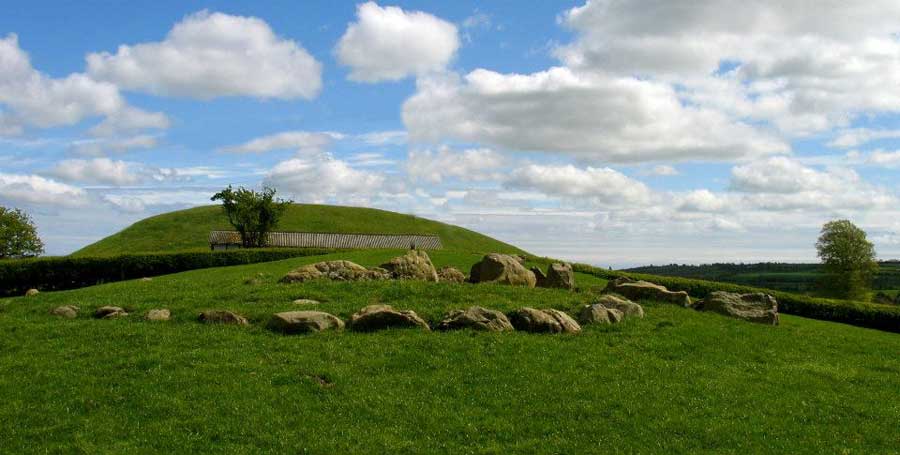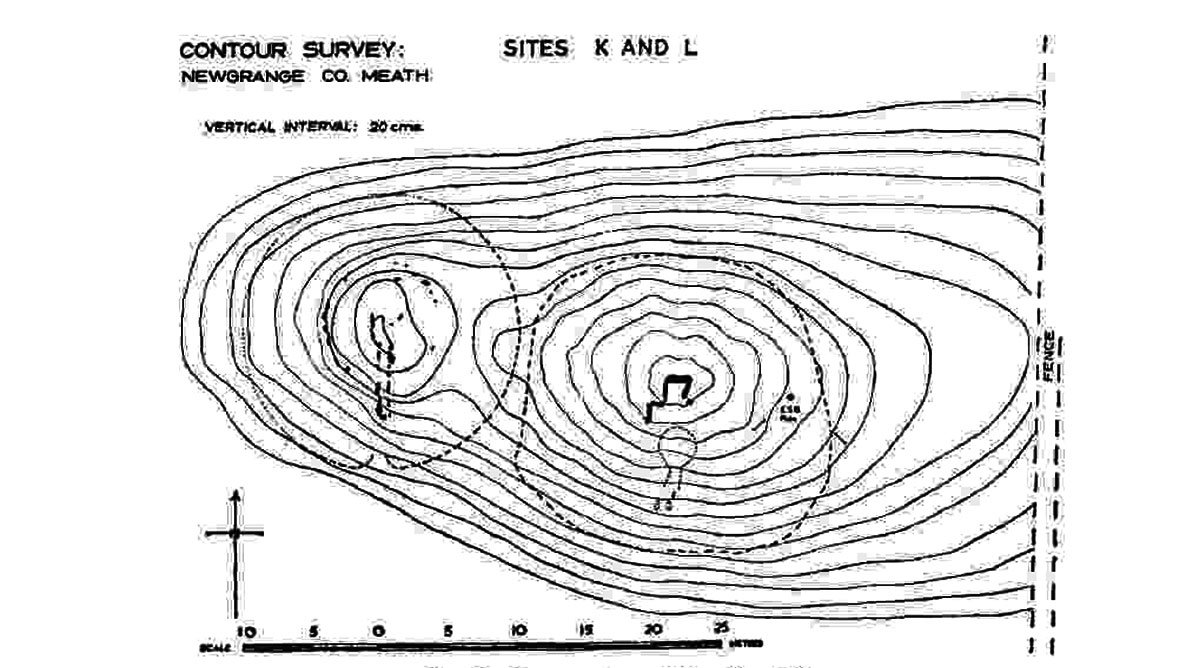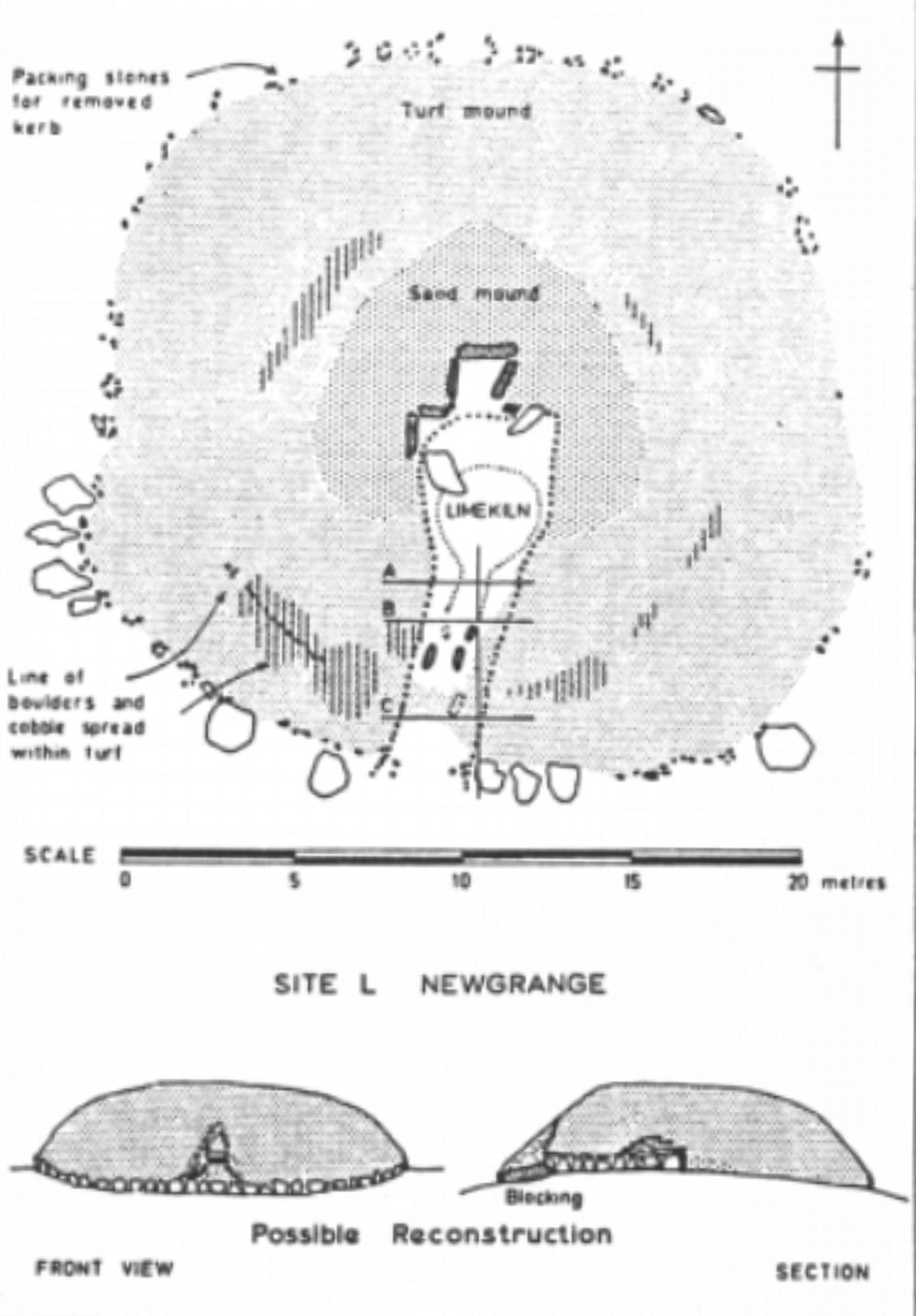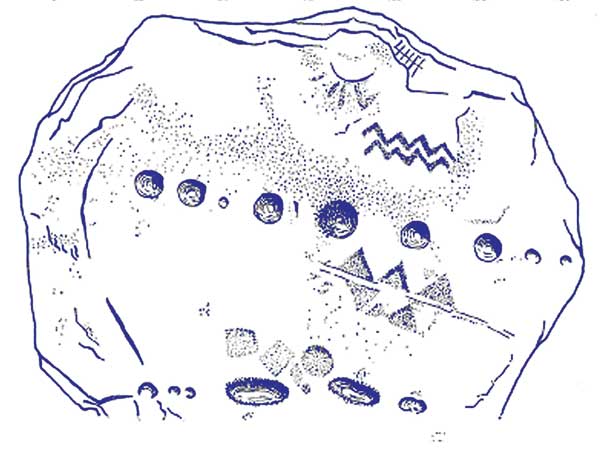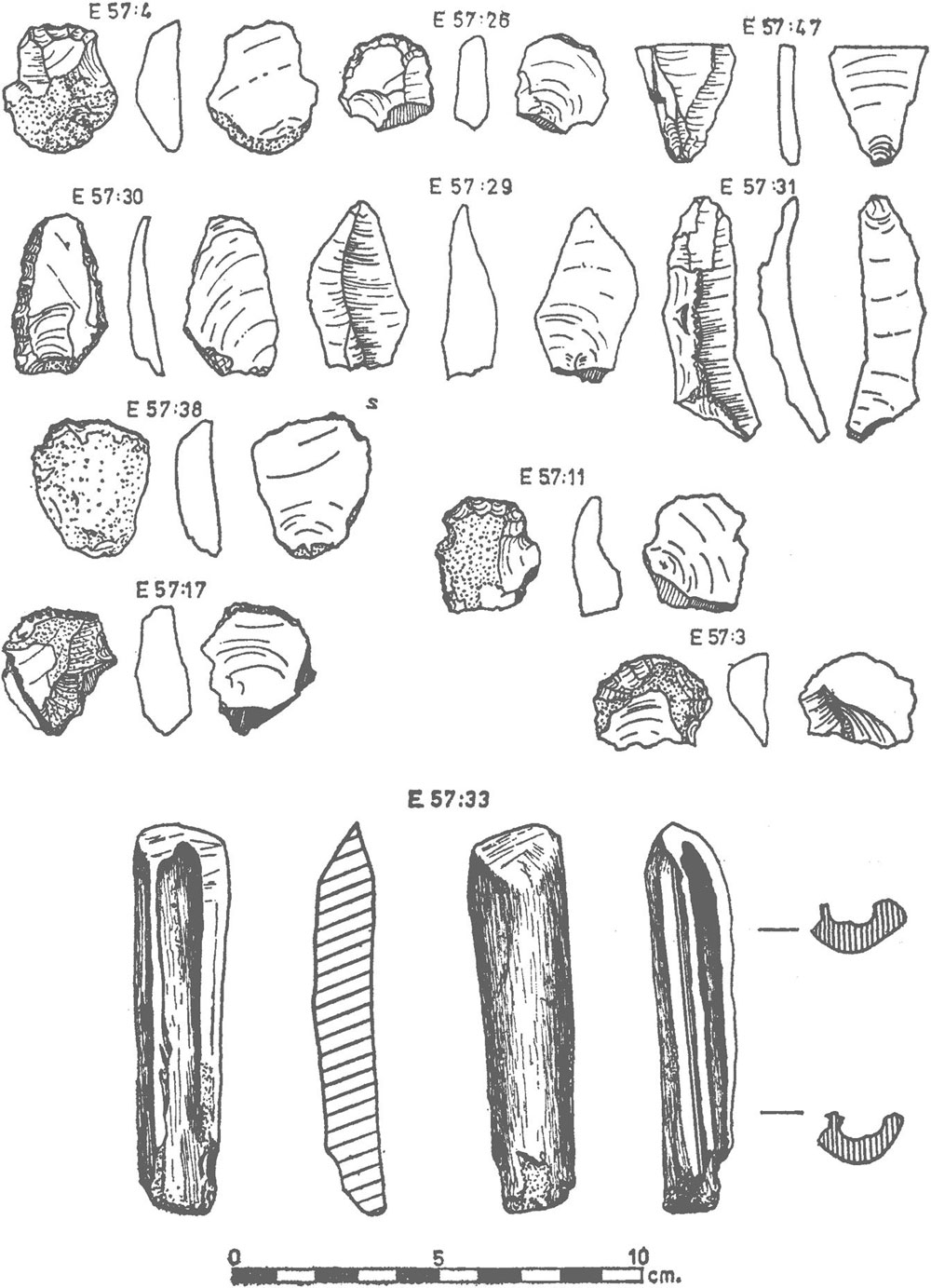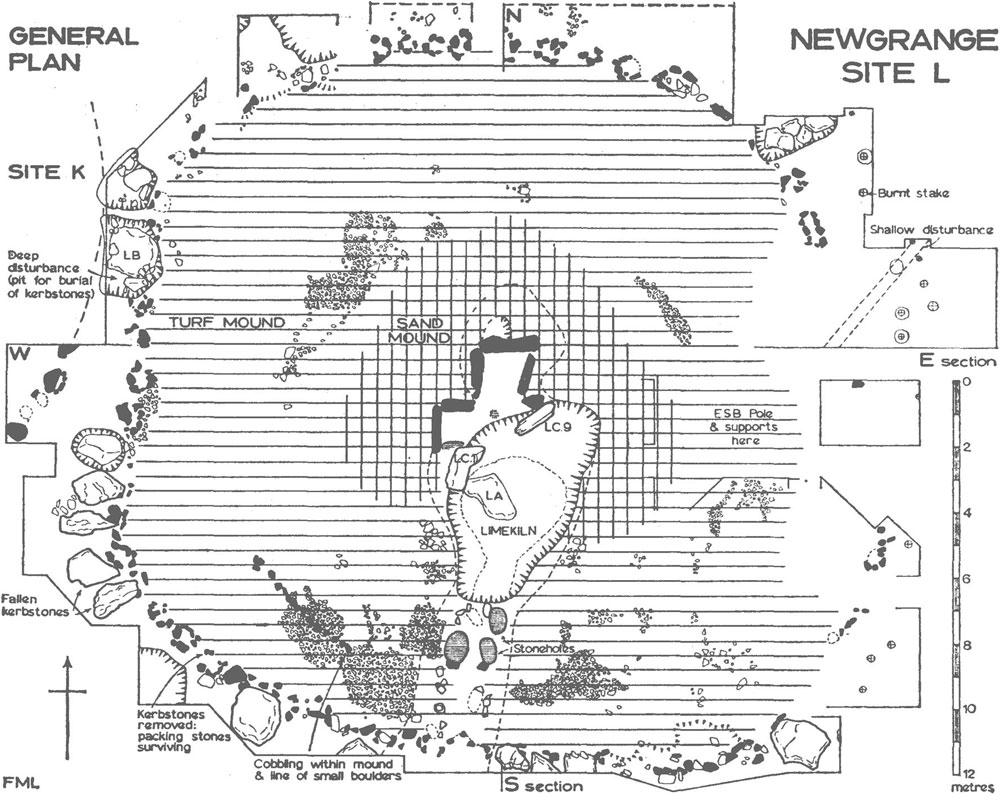Newgrange Satellite Sites K and L
Behold the two paps of the king's consort
Here beyond the mound west of the fairy mansion
The spot where Cermait the fair was born,
Behold it on the way, not a far step.From a dindshenchas poem entitled
Brug na Boinne by Macnia mac Oengusa,
Book of Leinster, 1160.
The Boyne Valley has some forty neolithic monuments all clustered within the Bend of the River Boyne. Aside from the famous passage-grave, there are several other monuments on the ridge of Newgrange. There are three smaller satellite passage-graves, Sites K and L to the west and Site Z to the east of Newgrange, and there may well have been a fourth mound, Z1, also on the east side. These very interesting monuments were excavated by Michael O'Kelly, his wife Clare, Frances Lynch, Elizabeth Twohig, C. A. Erskine, F. McCormick, and Geraldine Roche in 1965 and 1966 during the wider excavations at Newgrange. The results were published in a paper titled - Three Passage-Graves at Newgrange, Co. Meath, in 1978.
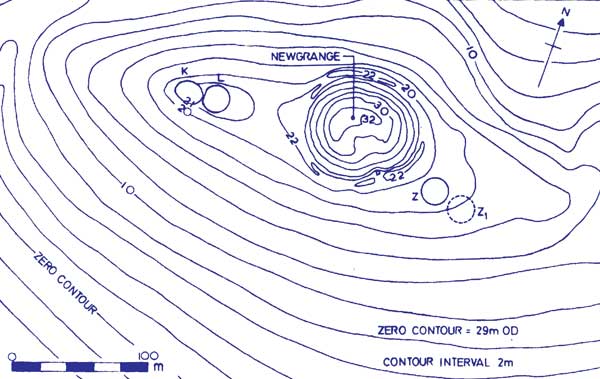
About a hundred yards distant from this mount (Newgrange), are placed two other pyramids, but of a much smaller size, not above a fourth part as big, and like it, are both encompassed with a circle of stones, set at some distance each from another, round their bottoms; but these stones bear a sort of proportion to the dimensions of the mount they surround, and therefore are abundantly less than those encompassing the larger mount.
As yet we know not what may be the fashions or inward contrivance of these two smaller mounts, because their caves or passages leading to them have not been hitherto discovered; but such an attempt were easy, by reason of the smallness of the mounts, did any person's leisure or curiosity incline them after such antiquities.
Sir Thomas Molyneux, 1711.
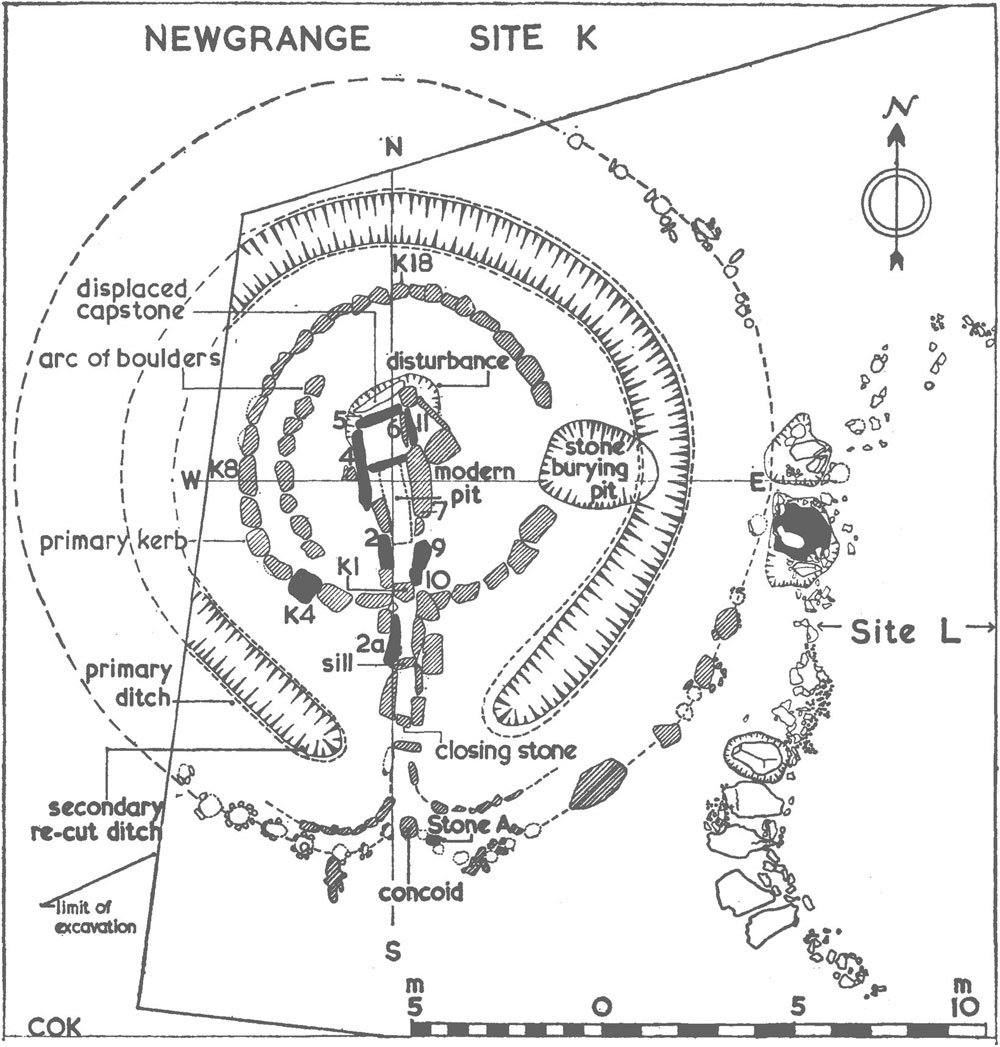
Site K at Newgrange
Site K is probably the older of the two mounds and is an extremely interesting monument. It is about twenty meters in diameter and has thirty-four kerbstones, one bearing engravings. The chamber is undifferentiated, but has a small triangular 'annex' added to the right side, which was not accessible from the chamber.
The passage is nine meters long and opens towards the south. The passage and chamber were separated by a decorated sillstone with interesting carvings on both sides. Seven stones bearing decoration were found in total at Site K.
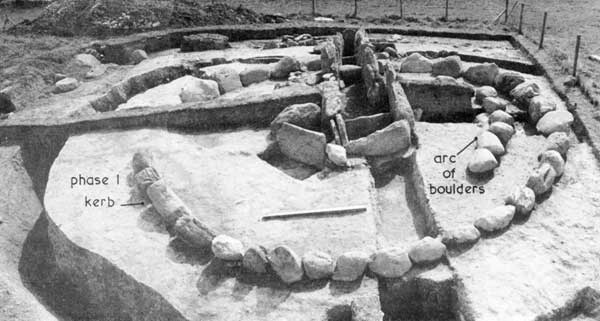
The monument seeems to have been built in two at least two phases; a smaller inner monument, which can be seen in the excavation photo above, is eight meters in diameter with a passage five meters long. This passage was later extended. An unusual feature, a ditch was dug around the original monument, some three meters out from the kerb.
Outside the kerb of the primary monument and at a distance of 1 to l.5 meters from it a ditch, penannular in plan, had been dug and the material, a yellow sandy pebbly soil from the top of the glacial drift, had been used in the building of the mound. The uncut causeway between the ends of the ditch lay opposite the entrance to the tomb. There was a slight lack of symmetry at the ditch ends, that on the west being 3.5 meters from the primary kerb while that on the east was approximately 3 meters. It will be appreciated therefore that as the ditch approached the causeway, its line swung outward from the kerb.
There is no doubt, however, that it is contemporary with the kerb since it was first cut from the old turf surface on which the boulders of the kerb had been laid. The ditch remained open long enough for its shoulders to have weathered down somewhat and to provide an accumulation of silt in its bottom. Because of waterlogging, the silt became a blue-grey gley. Furthermore, some of the turves of the primary mound slipped outward over the kerb and slid down over the shoulder of the ditch, as can be seen in the north-south profile at the north end.
The conformity of the ditch with the plan of the monument, as well as the other features outlined above, suggests that itwas dug by the primary passage grave builders, but whether or not its sole purpose was the obtaining of additional material for the mound is open to question.
Three Passage-Graves at Newgrange, Co. Meath, O'Kelly, O'Kelly, Lynch, Twohig, Erskine, McCormick, and Roche.
At some later stage the passage was extended and a new outer kerb was added bringing the diameter to twenty meters. A smaller inner ring of boulders was found between the chamber and the original kerb on the west side. Such inner rings are found at several other sites such as nearby Knowth, Townley Hall and Carrowmore, and may indicate that the monument had a freestanding phase.
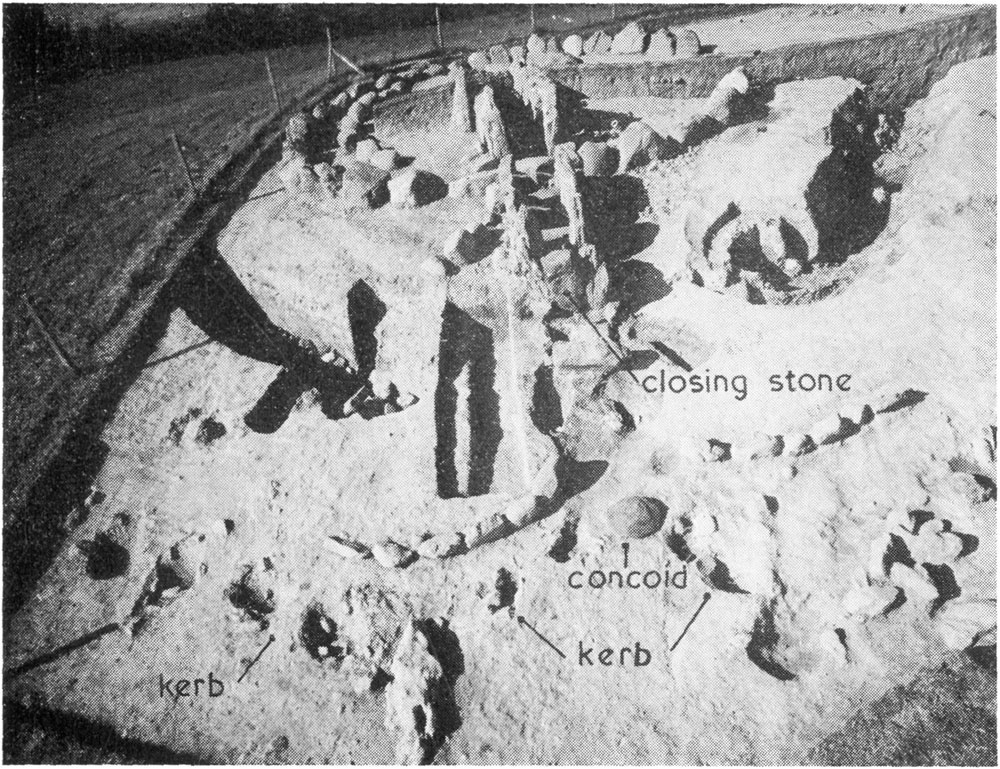
Also during the excavation, a displaced capstone was discovered, which had been pushed down behind the chamber. A blocking stone was found in the entrance to the passage.
The only find from Site K came from the chamber: a small white marble, possibly made of hard chalk. It has been speculated that these marbles, which are often found at these sites, may represent a seed, or perhaps the soul of the individual who was cremated. Several were found in the chamber of Newgrange. They are usually burnt and cracked by the heat of the cremation pyre.

